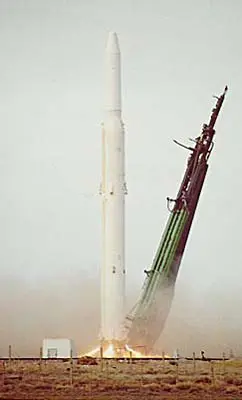Cosmos 1769
Launch Success
Liftoff Time (GMT)
05:08:00
Monday August 4, 1986
Mission Details
Cosmos 1769
The US-P and its variant US-PM satellites are a family of Soviet electromagnetic intelligence satellites developed in the 1960s to locate the military ships of enemy fleets by passively listening to the electromagnetic emissions of their electronic equipment. These satellites were used to obtain tactical intelligence and provide target coordinates for air-to-sea and sea-to-ship trans-horizon missiles tasked with sinking the ships. The US-P was designed in the 1960s by OKB-52 and built by KB Arsenal in Leningrad. The first launch took place in 1974 and the system was declared operational in 1978. The data collected by the US-P were complemented by those of the US-A satellites which used an active radar to detect ships in radio silence. From 1993, the US-P was replaced by the US-PM. Russia had only one operational US-PM satellite left in 2014, but it was replaced by the Pion-NKS satellite, launched in 2021. The US-P satellite is a cylindrical spacecraft with a diameter of 1.3 meters and a mass of 3.3 tons. The body of the satellite is framed by two solar panels one and a half times longer and parallel to it, bringing the total length to 17 meters. The satellite is equipped with an electromagnetic signal detection system. A large X-shaped antenna collects the electromagnetic signals emitted by the enemy fleet. Orbit and orientation corrections are performed with 4 rocket engines of 100 newtons burning a mixture of UDMH and nitrogen peroxide. Ion engines are used for frequent fine adjustments of the orbit. The system was capable of providing data on potential targets with an accuracy of 2 kilometers. US-P satellites operate in an orbit with an average altitude of 435 km and an inclination of 65°. The average life of a satellite was one and a half years. Given the speed at which ships move, the system had to be able to update the position of targets every two hours so that the coordinates provided to the missile remained usable.
Low Earth Orbit
1 Payload
3,300 kilograms
Launch Site
Stats
Tsyklon-2
75th
Mission
4th
Mission of 1986
Yuzhmash
2024th
Mission
54th
Mission of 1986
1986
64th
Orbital launch attempt

